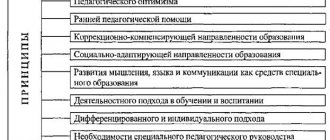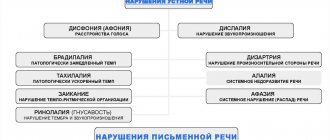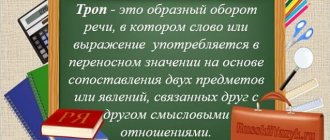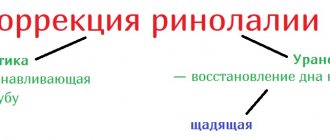What is dysarthria
For the first time, people started talking about a speech disorder, which was later called dysarthria, about a hundred years ago. Then the researchers identified a group of sound pronunciation disorders, calling them tongue-tied. A little later it was divided into functional and organic. At the same time, factors that could lead to dysarthric speech disorders were identified.
Despite the fact that dysarthria has been studied for so long, much remains unclear. Today there are two main approaches to the study of this speech disorder:
- neurological. This direction takes into account the clinical manifestations of dysarthria and the area of damage to the central nervous system. Speech disorders are considered in conjunction with other movement disorders that the patient has.
- neurophonetic. Phonemic analysis of dysarthric speech is carried out taking into account psycholinguistic techniques. More attention is paid to identifying and studying neurophonetic syndromes of dysarthria, and the clinical picture of pathology fades into the background.
That is why different researchers give different concepts of pathology. Some people believe that dysarthria should be called a pronunciation disorder in which the prosodic aspect of speech is disrupted. In this case, the definition of pathology is given based on its external manifestations. A number of researchers call dysarthria a coordination disorder of speech that occurs as a result of damage to the efferent system and motor analyzer. That is, unintelligible speech is only a symptom of another pathology.
Both of these definitions are correct and in some way complement each other. In simple terms, dysarthria can be called any disorder of sound pronunciation caused by organic damage to the brain. This can be either a complete lack of speech or a nasal, slurred tone of pronunciation.
The controversy extends beyond the definition of dysarthria itself. The classification of the types of this speech dysfunction also causes a lot of controversy.
Treatment in Moscow
For many years, the Yusupov Hospital has specialized in the treatment of dysarthria in children and adults. The high professional level of specialists allows us to accurately determine the type of pathology, which eliminates the possibility of incorrect prescription of therapeutic measures. An individual approach to each patient guarantees a favorable atmosphere throughout the entire course of treatment and rehabilitation. The main directions of the clinic:
- Treatment of complex neuralgic pathologies - multiple sclerosis, major stroke and other dangerous diseases that cause the death of certain groups of brain cells.
- Help for patients with cancer - chemotherapy, therapy that eliminates pain syndromes and painful symptoms.
- Treatment of progressive brain diseases - Alzheimer's disease, vascular dementia, Pick's disease and other rare forms of dementia.
- Rehabilitation of patients after severe operations, chemotherapy, traumatic brain and spinal injuries, major stroke and radiation therapy.
- Effective treatment and correction of speech disorders. The range of measures includes constant monitoring by specialists, physiotherapeutic measures, therapeutic exercises and classes with a speech therapist who has extensive experience in the successful treatment of dysarthria.
By contacting the Yusupov Hospital, the patient receives a guarantee of a speedy recovery and the most favorable outcome. You can make an appointment for a consultation with specialists by phone.
Make an appointment
Types of dysarthria according to O.V. Pravdina
Now there are several principles for dividing speech pathology such as dysarthria into types. In domestic speech therapy, the most common classification is based on the location of the affected part of the central nervous system.
The neurological approach is reflected in the classification proposed by O. V. Pravdina. Their description is presented in the table below:
| Name | CNS affected area | Speech Impairment |
| Cortical | Cortical structures of the brain. It is the cortex that is responsible for the functioning of the speech muscles and the human ability to speak. | Partial paralysis of the muscles of the articulatory apparatus, the sequence of movements when setting articulatory poses is disrupted. The pronunciation of consonants suffers. |
| Subcortical (extrapyramidal) | The striatum and pallidum are subcortical nuclei. These structures regulate muscle tone and also make it possible to give emotional expressiveness to speech. | The muscle tone of the speech apparatus is unstable, the muscles contract involuntarily. The person experiences difficulty trying to maintain articulatory posture. Sound disturbances are unstable. |
| Cerebellar | Conducting pathways and cerebellar nuclei. The respiratory, vocal and articulatory apparatus stop working synchronously. | A person’s speech sounds chanted; this happens involuntarily. Most sounds take on a nasal tone. Speech loses its emotional coloring. |
| Pseudobulbar | Systems responsible for conducting nerve impulses from the cerebral cortex to the nuclei of the medulla oblongata. | Bilateral paralysis of the muscles of the speech apparatus, increased muscle tone, they are practically motionless. Characteristic softening of sounds. Complex and differentiated sounds are affected selectively. |
| Bulbarnaya | Peripheral motor nerve nuclei (brain stem) | Paralysis of the muscles of the speech apparatus (right- or left-sided), the ability to involuntary and voluntary movements is lost. Speech takes on a nasal tone. |
Despite the fact that Pravdina’s classification is used by a large number of specialists, many researchers still consider it inaccurate. Most controversy arises regarding cortical dysarthria. This type of pathology is often regarded as a manifestation of motor aphasia, especially in adults.
Article:
Introduction.
Dysarthria is a severe and complex disorder of the sound aspect of speech. Dysarthria (from the Greek dys - a prefix meaning disorder, arthroo - I pronounce clearly) is a pronunciation disorder caused by insufficient innervation of the speech apparatus with lesions of the posterior frontal and subcortical parts of the brain.
Dysarthric speech usually means speech that is unclear, slurred, muffled, often with a nasal tint. The expression used to characterize it is “like porridge in the mouth.” Dysarthria occurs as a result of damage to the nervous executive apparatus of speech with one or another localization of the lesion in the central nervous system.
The clinical picture of dysarthria was first described more than a hundred years ago (A. Oppenheim, H. Gutzman, etc.). A mild degree of dysarthria as a speech disorder, differing in its pathogenesis, was isolated from the group of sound-pronunciation disorders by A. Kussmaul in 1888. Calling all speech defects tongue-tied, A. Kussmaul, along with functional ones, identified organic tongue-tiedness, which, in his opinion, was one of the forms of central, organically caused speech impairment. A. Kussmaul was the first to reveal those factors that entail dysarthric speech disorders, manifested in the form of unclear pronunciation of varying degrees of severity.
Despite the long history of studying dysarthria, much about this problem remains controversial.
1. Concept and etiology of dysarthric disorders.
Currently, there are two main approaches to the study of dysarthric disorders.
The first is the study of dysarthric disorders from a neurological perspective. This aspect takes into account the pathogenesis of the clinical manifestations of dysarthria, the localization of the lesion, the nature of speech disorders in the syndrome of corresponding movement disorders.
The second approach is neurophonetic. Neurophonetic study involves phonemic analysis of dysarthric speech based on modern psycholinguistics. That is, the emphasis is not on the clinic, but on the pathogenetic analysis of identifying neurophonetic dysarthria syndromes.
Analysis of the literature data showed that there are different definitions of dysarthria.
Dysarthria is a disorder of the pronunciation side of speech, in which the prosodic side of the sound flow, the phonetic coloring of sounds, or the incorrect implementation of phonemic signal signs of the sound structure of speech (omissions, substitutions of sounds) suffer. This definition of dysarthria is given in the textbook by L.S. Volkova and V.I. Seliverstova.
Dysarthria is a violation of coordination of the speech process, which is a symptom of damage to the motor analyzer and efferent system. In this case, the ability to articulate speech and articulation in general is impaired. (K. Becker, M. Sovak).
Both definitions are important, since the first is based on external manifestations of pathology, while the second more indicates the presence of dysarthria as a symptom of damage to the central and peripheral nervous system.
Thus, in modern literature the following definition of dysarthria has been identified.
Dysarthria is a violation of sound pronunciation and prosodic aspects, caused by organic insufficiency of innervation of the muscles of the speech apparatus. This definition reveals, first of all, the symptoms of this disorder and its mechanism.
Etiology. Dysarthria is a symptom of complex brain damage of a bulbar, pseudobulbar and cerebellar nature. The etiology of cerebral palsy and dysarthria as a symptom of cerebral palsy has not been sufficiently studied. Previously, it was believed that the main cause was birth trauma. But as studies in recent years have shown (E.N. Vinarskaya), more than 80% of cases of this pathology are congenital disorders of the brain, that is, intrauterine disorders. Based on these studies, we can say that the pathology that occurs during childbirth is a secondary cause, which in turn can aggravate the effect of the primary one.
Specific causes leading to brain damage can operate in different periods: prenatal (main), natal and postnatal.
In the prenatal period, there is toxicosis, maternal diseases in the first half of pregnancy, chronic maternal diseases: cardiovascular diseases, pulmonary tuberculosis, severe gastrointestinal diseases and liver diseases, genitourinary diseases, alcoholism.
The natal period is characterized by the pathology of childbirth (dry, prolonged or rapid labor), asphyxia of the newborn, group and rhesus - conflict situation.
In early postnatal development, the following features are distinguished: motor restlessness, unexplained sleep disturbance, difficulty in holding the nipple, lethargy of the act of sucking, followed by rapid fatigue, frequent choking, profuse regurgitation, and possible breast refusal. There is an inability to keep the head in an upright position for up to 5-7 months, and a delay in the walking process (up to 1 year 2 months).
The diseases suffered by the child during that period also have a great influence: viral flu, pneumonia, severe forms of gastrointestinal diseases, often colds and infectious diseases, in some cases accompanied by convulsive seizures against a background of high temperature.
In short, we can identify some specific causes that lead to brain damage and the occurrence of dysarthria in the prenatal (main), natal and postnatal periods.
1) Prenatal period, that is, prenatal. The most common causes of intrauterine brain damage are: diseases of the mother during pregnancy (viral, infectious); the mother has cardiovascular and renal failure; mental and physical trauma during pregnancy; increased dose of radioactivity during pregnancy; the influence of nicotine, alcohol and drugs; mismatch between mother and fetus in terms of Rh factor and group affiliation. The influence of these reasons is especially dangerous in the first trimester of pregnancy.
2) Natal period (secondary aggravating factors): traumatic brain injury during childbirth; bleeding in the brain as a result of a sharp change in pressure (during rapid labor, caesarean section); unsuccessful use of obstetric aids (primary cause).
3) Postnatal period: diseases suffered by the child himself (meningitis, meningo-encephalitis and others); traumatic brain injuries.
It is important to note that problems in the prenatal period often lead to problems in the natal and postnatal periods.
In conclusion, it should be noted that children with dysarthria, according to clinical and psychological characteristics, can be conditionally divided into several groups depending on their general psychophysical development: dysarthria in children with normal psychophysical development; dysarthria in children with cerebral palsy; dysarthria in children with mental retardation; dysarthria in children with hydrocephalus; dysarthria in children with mental retardation; dysarthria in children with MMD (minimal cerebral dysfunction).
2. Classification and symptoms of dysarthria.
In modern literature, the following classifications of dysarthria are identified:
– Classification according to severity. It is based on taking into account the degree of brain damage. And depending on the degree of damage, anarthria, dysarthria, and erased dysarthria are distinguished: anarthria - complete impossibility of the pronunciation aspect of speech; dysarthria (severe) - the child uses oral speech, but it is inarticulate, incomprehensible, sound pronunciation is grossly impaired, as well as breathing, voice, and intonation expressiveness; erased dysarthria - all symptoms (neurological, psychological, speech) are expressed in an erased form. Severe dysarthria can be confused with dyslalia. The difference is that children with erased dysarthria have focal neurological microsymptoms.
– The next classification is a classification according to the degree of intelligibility of speech for others. It was proposed by the French neurologist Tardieu (1968) in relation to children with cerebral palsy. It is based on taking into account purely external manifestations. The author identified four degrees of severity of speech disorders: the first - the mildest degree - a violation of sound pronunciation is detected only by a specialist during the examination of the child; second, pronunciation disorders are noticeable to everyone, but speech is understandable to others; third - speech is understandable only to the child’s loved ones and partially to others; fourth, the most severe – absence of speech or speech is almost incomprehensible even to the child’s loved ones (anarthria).
— Based on the syndromological approach, the following forms of dysarthria are distinguished: spastic-paretic, spastic-rigid, spastic-hyperkinetic, spastic-atactic, ataxic-hyperkinetic, spastic-atactic-hyperkinetic. This classification takes into account and differentiates primarily neurological symptoms. Identification of the form of dysarthria according to this classification is possible only with the participation of a neurologist.
— The classification in domestic neuropathology and speech therapy was created taking into account the mechanism of the disorder and the location of the lesion. Depending on the location of the lesion, when the peripheral motor neuron is damaged and its connection with the muscle, peripheral paralysis is distinguished. When the central motor neuron is damaged and its connection with the peripheral neuron, central paralysis develops.
1. Bulbar dysarthria.
Nature of brain damage. Unilateral (it makes no difference whether it is right or left) or bilateral damage to peripheral motor neurons (trigeminal, facial, glossopharyngeal, vagus and sublingual).
Pathogenesis (features of movement disorders). Selective flaccid, predominantly right- or left-sided paralysis of the muscles of the speech apparatus (tongue, lips, soft palate and pharynx, larynx, levator mandibular, respiratory). Atrophy of these muscles, their atony (tongue flaccid, flabby). The pharyngeal and mandibular reflexes are reduced or absent. Disorders of any involuntary and voluntary movements in the corresponding muscle groups.
Clinical symptoms. The voice is weak, dull, depleted. Vowels and voiced consonants are deafened. The timbre of speech is changed according to the open nasal type. Vowel articulation is close to a neutral vowel sound. The articulation of consonants is simplified. Stop consonants and vibrant /p/ are replaced by corresponding fricatives. The character of the gap in slotted sounds is also simplified. As a result, voiceless flat sounds dominate speech. Selective articulation disorders are not uncommon in accordance with the selective distribution of flaccid paresis. Speech is slow and the patient gets tired. Bulbar dysarthria occurs only in adulthood.
2. Pseudobulbar dysarthria.
Nature of brain damage. Bilateral lesions of the central motor corticobulbar neurons are obligatory.
Pathogenesis (features of movement disorders). Pyramidal spastic paralysis of the muscles of the speech apparatus. There is no muscle atrophy. The muscle tone is increased according to the type of spastic hypertension (the tongue is tense, pushed back). The pharyngeal and mandibular reflexes are strengthened. Violent laughter and crying are common. Paralysis is always bilateral, although it is possible that it is significantly predominant on the right or left. The most disrupted are: 1) voluntary movements and 2) the most subtle movements of the tip of the tongue.
Clinical symptoms. The voice is weak, hoarse and hoarse, vowels and consonants are pronounced dullly, but sometimes, along with deafening of voiced consonants, voicing of voiceless consonants is observed. The timbre of speech is nasal, especially for back vowels and hard consonants with a complex articulatory structure (r, l, sh, zh, ch, ts). Vowel articulation is shifted back. The articulation of consonants is simplified and also shifted back. Stop consonants and vibrant /p/ are replaced by fricatives. Friction consonants with a complex shape of the gap turn into flat fricatives. The articulation of hard consonants is more impaired than soft ones. The patient hears his pronunciation defects and actively tries to overcome them. However, his efforts lead, as a rule, to an increase in hypertension in paralyzed muscle groups and, consequently, to an increase in the pathological features of articulation.
3. Cerebellar dysarthria.
Nature of brain damage. Occurs when the cerebellum and its connections with other brain structures are damaged.
Pathogenesis and clinical symptoms. There is marked asynchrony between breathing, phonation and articulation. As a result, speech is slow in tempo, jerky, with impaired stress modulation, with the voice fading towards the end of the phrase, that is, chanted speech. Due to hypotonia, movements of the articulatory organs are reproduced and maintained with difficulty. As a result, sounds that require fairly clear, differentiated movements and sufficient strength of muscle contractions are phonetically impaired: complex anterior lingual sounds, affricates, stop sounds. A symptom of open nasality develops. Prosodic disturbances are more pronounced.
4. Subcortical dysarthria (extrapyramidal)
Nature of brain damage. Various lesions of the subcortical nuclei of the brain and their nerve connections.
Pathogenesis (features of movement disorders). Extrapyramidal disorders of muscle tone in the form of hypertension, hypotension or dystonia. Violent movements (hyperkinesis) in the muscles of the speech apparatus in the form of trembling (for example, intonation tremor), slow worm-like muscle contractions (for example, with double athetosis), rapid sudden contractions of different muscle groups (for example, with chorea), rapid rhythmic contractions of the same same muscles (for example, with myoclonus).
Clinical symptoms. Pronunciation disorders are extremely varied and often unstable. The voice can be tense, harsh, hoarse, fluctuating in timbre and volume. Sometimes the voice fades during speech and turns into a whisper. Sometimes the articulation of vowels is more impaired than consonants. Individual words and sounds can be pronounced correctly, but at the moment of hyperkinesis they turn out to be sharply distorted and inaudible. As a rule, the tempo, rhythm and melody of speech are upset. The patient notices his articulation disorders.
5. Kinesthetic postcentral cortical dysarthria.
Nature of brain damage. Unilateral damage to the postcentral fields of the cortex (their lower parts) of the dominant, usually left hemisphere of the brain.
Pathogenesis. Apraxia of kinesthetic type. Disintegration of kinesthetic generalized patterns of articulation of noise characteristics of sounds in the structure of a syllable with difficulties in distinguishing the corresponding articulatory structures.
Clinical symptoms. The voice and timbre of speech are not upset. In the process of speech, noise signs of sounds are replaced by signs of place of formation (especially lingual consonants), signs of the method of formation (especially affricates and sibilants), signs of hardness and softness. These articulation disorders are unstable and labile, as a result of which sound replacements are ambiguous (p-m, b-p, p-f, p-t, etc.). Even in severe cases of kinesthetic dysarthria, one or another noise articulatory feature may not be distorted in 100% of cases. A dysarthric child hears his articulation errors and actively (under the control of hearing and kinesthetic sensations) tries to correct them, which leads to disturbances in fluency and slower speech.
6. Kinetic premotor cortical dysarthria
Nature of brain damage. Unilateral damage to the premotor fields of the cortex (their lower parts) of the dominant, usually left, hemisphere of the brain.
Pathogenesis. Apraxia of kinetic type. The disintegration of temporary generalized patterns of articulatory action with tension, slowness of individual movements, the disintegration of articulatory actions into their constituent elements; difficulties switching from one element to another, perseveration.
Clinical symptoms. The voice is sonorous, the timbre of speech is not impaired. The rhythmic structures of words tend to become chains of open stressed syllables. The articulation of consonants is tense, initial and final consonants are often elongated or jerky. The replacement of fricative sounds with stop sounds is typical. Transitional phases of articulation often turn into independent insertion sounds. There are omissions of sounds in consonant clusters and simplification of affricates (ts - s, t, te). Excessive articulation tension indirectly leads to increased voice volume and selective deafening of voiced stops and, less frequently, fricative consonants.
Thus, the main symptoms of dysarthria are defects in sound pronunciation and voice, combined with disturbances in speech, especially articulatory motor skills and speech breathing.
In addition, the symptoms of dysarthria include speech and non-speech symptoms. Non-speech disorders include: massive disorders of the musculoskeletal system or motor sphere; violation of the emotional-volitional sphere; mental development disorder; impairment of cognitive activity; unique personality formation; impaired articulation, breathing, muscle tone.
Motor disorders usually appear at later stages of the formation of motor functions, especially such as the development of the ability to sit up independently, crawl with alternate simultaneous extension of the arm and the opposite leg forward and with a slight turn of the head and eyes towards the extended arm, walk, grasp objects with fingertips and manipulate them.
Emotional-volitional disorders manifest themselves in the form of increased emotional excitability and exhaustion of the nervous system. In the first year of life, such children are restless, cry a lot, and require constant attention. They experience sleep and appetite disturbances, a predisposition to regurgitation and vomiting, diathesis, and gastrointestinal disorders. Such children, as a rule, are weather dependent.
At preschool and school age, they are restless motorly, prone to irritability, mood swings, fussiness, and often show rudeness and disobedience. Motor restlessness increases with fatigue; some children are prone to hysteroid-type reactions.
Despite the fact that children do not have pronounced paralysis and paresis, their motor skills are characterized by general clumsiness, lack of coordination, they are awkward in self-care skills, lag behind their peers in dexterity and accuracy of movements, they are delayed in developing the readiness of their hand for writing, so it takes a long time There is no interest in drawing and other types of manual activities; poor handwriting is noted at school age. Violations of intellectual activity are expressed in the form of low mental performance, memory impairment, and attention.
Many children are characterized by a delayed formation of spatio-temporal concepts, optical-spatial gnosis, phonemic analysis, and constructive praxis.
Speech symptoms include: impaired sound pronunciation; violation of the prosodic aspect of speech; violation of phonemic functions. Fuzzy, blurred speech does not allow the formation of a clear auditory image of a word, which in turn further aggravates sound pronunciation defects; violation of the lexical and grammatical structure of speech; reading and writing impairment.
Thus, dysarthria is the most common speech disorder in children. Clinical features and severity of disorders depend primarily on the location and severity of brain damage.
So, we can draw brief conclusions on the presented topic:
– According to the literature, dysarthria represents all forms of sound pronunciation disorders, from slurred speech to a nasal, slurred tone of pronunciation. The leading defect in dysarthria is a violation of the sound pronunciation and prosodic aspects of speech associated with organic damage to the central and peripheral nervous systems.
– Dysarthria is a Latin term, which in translation means a disorder of articulate speech pronunciation. But a single definition of this pathology does not exist to this day. Some authors classify as dysarthria only those forms of speech pathology in which impaired sound pronunciation is caused by paralysis and paresis of the muscles of the speech apparatus. Other authors interpret dysarthria more broadly and include all lesions of articulation, phonation, and speech breathing that arise as a result of damage to various levels of the central nervous system.
– The reasons for the formation of such speech pathology as dysarthria are various harms of the prenatal, natal, postnatal periods: illnesses of the mother during pregnancy, weak labor of the mother, impaired early psychomotor development and severe illnesses of the child, especially in the first year of life.
– The main clinical signs of dysarthria are: disturbances of muscle tone in the speech muscles; limited possibility of voluntary articulatory movements due to paralysis and paresis of the muscles of the articulatory apparatus; voice and breathing disorders.
– Symptoms of erased dysarthria are differentiated according to the principle of visible (motor) neurological disorders, to which we pay our visual attention; and speech which we perceive with the auditory analyzer as a result of communication, which are essentially a manifestation or consequence of violations of the first group. They clarify the nature of the disorders and are the foundation for making a final diagnosis. These two groups are closely interrelated. References: 1) Gurovets G.V., Davidovich L.R., Mayevskaya S.I. Medical and pedagogical characteristics of complex forms of speech pathology. // Study and correction of speech disorders. - L., 1986. - P.73-79. 2) Zeeman M. Speech disorder in childhood. / Per. from Czech E.O. Sokolova. Ed. VC. Trutkeva, S.S. Lyapidovsky - M.: Medgiz, 1962 - 299 p. 3) Speech therapy. / Ed. K.P. Becker, M. Sovak. – M.: Education, 1983 – P.267. 4) Martynova R.I. Medical and pedagogical characteristics of dyslalia and dysarthria. // Essays on pathology of speech and voice. - M., 1963. No. 2. — P.34-48. 5) Pravdina O.V. Speech therapy. Textbook manual for defectologist students. fact-tov ped. Inst. Ed. 2nd, add. and processed - M.: Education, 1973. - 272 p. 6) Pravdina-Vinarskaya E.N. Current state of the problem of dysarthria. - M.: Education, 1973. - 283 p. 7) Reader on speech therapy. / Ed. Volkova L.S., Seliverstova V.I. - M.: Vlados, 1997. - P.227-228, 238-243.
Other types of classifications
The French neurologist Tardieu proposed classifying dysarthria according to how well others can understand the dysarthric person’s speech. As a result, he identified four degrees of severity of the violation:
- Only a specialist can identify violations.
- Speech problems are noticeable to others, but speech is understandable.
- Only people from his immediate environment can understand a child.
- There is no speech at all or it is incomprehensible even to the child’s loved ones.
This classification is very clear and convenient. It is often used in their work not only by speech therapists, but also by educators, psychologists, and teachers.
In speech therapy work, the division of dysarthria into types is also often used based on the syndromic approach. In this case, the speech therapist should work together with a neurologist. The doctor determines the leading symptom, and the teacher identifies similar defects in the functioning of the speech apparatus.
Using this approach made it possible to identify the following types of dysarthria:
- spastic-paretic – with the leading syndrome being spastic paralysis;
- spastic-rigid – spastic paralysis and rigidity syndromes;
- hyperkinetic – hyperkinesis;
- ataxic – ataxia;
- spastic-atactic – spastic paralysis and ataxia;
- spastic-hyperkinetic – spastic paralysis and hyperkinesis;
- spastic-atacticohyperkinetic – spastic paralysis, ataxia, hyperkinesis;
- ataxic-hyperkinetic – ataxia and hyperkinesis.
Dysarthria is also divided into types based on the severity of the disorder. In mild forms, speech disorders are minor, often noticeable only when tired. This form is also called erased.
Mild dysarthria has much in common with dyslalia. The only difference is that dysarthric sufferers experience neurological microsymptoms.
The average degree is direct dysarthria (severe), characterized by obvious speech impairments, it becomes slurred, blurred, but generally remains understandable to others.
In severe dysarthria, a person’s speech cannot be understood. If the pronunciation side of speech is impossible, then this form is called anarthria.
Characteristics of clinical forms of dysarthria
Bulbar dysarthria is characterized by areflexia, amymia, disorder of sucking, swallowing solid and liquid food, chewing, hypersalivation caused by atony of the muscles of the oral cavity. The articulation of sounds is slurred and extremely simplified. All the variety of consonants is reduced into a single fricative sound; sounds are not differentiated from each other. Nasalization of voice timbre, dysphonia or aphonia is typical.
With pseudobulbar dysarthria, the nature of the disorder is determined by spastic paralysis and muscle hypertonicity. Pseudobulbar paralysis manifests itself most clearly in impaired tongue movements: great difficulty is caused by attempts to raise the tip of the tongue upward, move it to the sides, or hold it in a certain position. With pseudobulbar dysarthria, switching from one articulatory posture to another is difficult. Typically selective impairment of voluntary movements, synkinesis (conjugal movements); profuse salivation, increased pharyngeal reflex, choking, dysphagia. The speech of patients with pseudobulbar dysarthria is blurred, slurred, and has a nasal tint; the normative reproduction of sonors, whistling and hissing, is grossly violated.
Subcortical dysarthria is characterized by the presence of hyperkinesis - involuntary violent muscle movements, including facial and articulatory movements. Hyperkinesis can occur at rest, but usually intensifies when attempting to speak, causing articulatory spasm. There is a violation of the timbre and strength of the voice, the prosodic aspect of speech; Sometimes patients emit involuntary guttural screams.
With subcortical dysarthria, the tempo of speech may be disrupted, such as bradylalia, tachylalia, or speech dysrhythmia (organic stuttering). Subcortical dysarthria is often combined with pseudobulbar, bulbar and cerebellar forms.
A typical manifestation of cerebellar dysarthria is a violation of the coordination of the speech process, which results in tremor of the tongue, jerky, scanned speech, and occasional cries. Speech is slow and slurred; The pronunciation of front-lingual and labial sounds is most affected. With cerebellar dysarthria, ataxia is observed (unsteadiness of gait, imbalance, clumsiness of movements).
Cortical dysarthria in its speech manifestations resembles motor aphasia and is characterized by a violation of voluntary articulatory motor skills. There are no disorders of speech breathing, voice, or prosody in cortical dysarthria. Taking into account the localization of lesions, kinesthetic postcentral cortical dysarthria (afferent cortical dysarthria) and kinetic premotor cortical dysarthria (efferent cortical dysarthria) are distinguished. However, with cortical dysarthria there is only articulatory apraxia, while with motor aphasia not only the articulation of sounds suffers, but also reading, writing, understanding speech, and using language.
Reasons for the development of dysarthria
Dysarthria develops as a result of organic damage to the central nervous system. Pathology can occur at different periods of a person’s life. But modern research has shown that in approximately 80% of cases it is congenital. That is, brain damage occurs during the intrauterine period of life.
The main reasons for the development of congenital pathology include:
- Viral and infectious diseases of the mother.
- Kidney failure, as well as pathologies of the heart and vascular system in women.
- Injuries during pregnancy, both physical and psychological.
- Radioactive exposure of a pregnant woman.
- Conflict of Rh factor and mismatch of blood groups between mother and fetus.
- Severe intoxication, including alcohol, nicotine and drugs.
The above factors pose the greatest danger to the fetus in the first three months of pregnancy.
Pathology can also occur at the time of birth. Previously, birth injuries were considered the main factor in the development of dysarthria. However, modern research has made it possible to classify problematic childbirth as secondary factors that aggravate existing pathologies in the fetus. The primary cause can only be considered the unsuccessful use of obstetric aids by medical staff. Brain injuries resulting from medical errors can lead to the development of cerebral palsy and other pathologies.
Impairment of the motor function of the speech apparatus can occur in a child born completely healthy. Dysarthria can occur as a result of a neuroinfection, poisoning (severe intoxication), brain injury, or oncological pathologies of the central nervous system. In adults, dysarthria can be caused by a stroke.
Correction of dysarthria is carried out in two directions at once. First of all, it is necessary to restore the functioning of the central nervous system, as far as the degree of its damage allows. This is done by a neuropathologist. At the same time, a defectologist or speech therapist carries out speech therapy work, which is aimed at normalizing the functioning of the articulatory apparatus.
How to recognize dysarthria
Despite the fact that dysarthria is a very complex speech disorder, it can still be corrected, especially if we are talking about an erased form of the disorder.
Dysarthria can be recognized from the first days of a child’s life, and parents should be wary of the following points:
- When breastfeeding, weak nipple latching and sucking reflex may indicate weakness of the muscles of the articulatory apparatus. Milk leaks from the mouth and even the nose;
- The child, later than his peers, begins to hold his head up (5-7 months), try to sit up and crawl (8-11 months), and walk (after 18 months);
- the child develops speech late, sounds are monotonous, articulation is unexpressed;
- increased salivation. The child cannot swallow his own saliva due to flaccid muscles of the tongue, cheeks and lips. The mouth is always open;
- problems with drinking from a cup, chewing food;
- lack of substantive activity. The baby does not show interest in toys, his actions with them are inadequate or inappropriate for his age;
- The baby does not react to loved ones and does not show joy. There is no smiling, walking, or motor activity of the arms and legs.
At a later age, dysarthria may be indicated by disturbances in breathing and speech rhythm.
A child, when talking, pronounces words with different volumes and intonations or in syllables. With dysarthria, a nasal sound appears. Due to the increased tone of the articulatory muscles, the child may get tired during the conversation. In addition to speech disorders, dysarthria also causes motor disorders. The child may grasp objects too strongly or weakly. The grasp reflex may be absent altogether. Spatial and visual and spatial perception are also affected. The child cannot correctly determine the shape and size of an object, for example, when playing with various sorters or pyramids. Difficulties arise when performing physical exercises.
Fine motor skills are especially affected in dysarthric children. It has long been proven that there is a relationship between the ability to perform precise coordinated movements of the hands, the development of speech and mental perception. Insufficiency of the motor part of the brain leads to the fact that it is very difficult for a child to perform pincer grasp with fingers, or it is not performed at all. In erased forms of dysarthric disorder, the development of fine motor skills helps to quickly “launch” speech.
Children who have a history of pathologies associated with the prenatal and birth periods are required to be observed by a pediatric neurologist. The doctor should pay attention to existing problems. If pronounced deviations in the baby’s development are not observed, then he is removed from the register.
Further monitoring of the child's condition is carried out by his parents. When the first alarming symptoms appear, it is better to immediately contact a specialist.
Treatment
Treatment requires an integrated approach, since monotherapy (taking one medication) will not give anything. The main goals of therapeutic measures are speech correction, normalization of speech breathing and elimination of voice disorders. For these purposes, medications, physical therapy (physical therapy), and speech therapy sessions are prescribed.
Drug therapy
Medicines are selected by the doctor depending on the type of pathology. The following pharmacological groups are most often prescribed:
- Nootropics are drugs designed to increase mental abilities and improve memory. Such drugs include Encephabol, Pantocalcin, Picamilon;
- Sedatives (calming) are medications that relieve nervous tension and have an anti-anxiety effect. The most popular are “Persen” and “Novo-passit”;
- Calcium channel blockers - normalize cerebral circulation, the functioning of the vascular system, and reduce the risk of developing oxygen starvation of brain cells. Cinnarizine, Gliatilin and Instenon are considered effective drugs;
- Metabolics - correction of respiratory functions, improvement of metabolism, normalization of cerebral circulation. They are used for various traumatic brain injuries, hypoxia and other pathological conditions. The most commonly prescribed drugs are Cerebrolysate or Actovegin.
Any prescription is made by a doctor after diagnostics and an accurate diagnosis. Self-medication is unacceptable and leads to aggravating consequences.
Classes with a speech therapist
Speech therapy procedures have a beneficial effect on the muscles of the articulatory organs and develop fine motor skills. Individual techniques are developed by a speech therapist depending on the pathological condition. The set of exercises usually includes:
- Articulation and finger gymnastics;
- Exercises to develop voice (orthophony);
- Breathing exercises;
- Correction of speech expressiveness;
- Treatment and correction of written speech disorders;
- Restoring reading abilities.
Physiotherapy
One of the important techniques for dysarthria of any degree. Exercises are performed at home on an ongoing basis. This can be body turns, forward bends, etc. When performing any complex exercise, it is important to breathe correctly. Take a deep breath through your mouth and exhale slowly through your nose. Gymnastics helps normalize metabolic functions, strengthen the body and improve cerebral circulation.
Massage
Speech therapy massage for dysarthria should be done carefully so as not to cause pain to the patient. An individual set of measures is developed by a speech therapist. To improve articulation abilities, experts recommend several massage exercise techniques:
| Massaging area | Methodology |
| Language | Each exercise is performed at least 5-7 times. First you need to stroke your tongue with your index finger. The movement is spiral. In this case, you need to press lightly, without abusing the force of pressure. The second set of exercises is moderate pinching and stroking. Produced from the tip of the tongue to its middle. |
| Lips | The massage is done with two fingers. Movements are spiral and wave-like. First, the upper lip is gently massaged, then the lower lip and the corners of the lips. The final stage is stroking, light pinching and patting. |
| Sky | First, strokes are made with the tongue in the direction from the fangs to the middle of the palate. Then pats are made in the same direction. Completion: stroking the palate with the tongue in wave-like movements. |
During the rehabilitation period, physiotherapy, acupuncture, medicinal baths, and hirudotherapy (leech treatment) are prescribed. An important role in the treatment of dysarthria is played by dolphin therapy, art therapy (clay modeling, drawing therapy, etc.), and sensory therapy. The effectiveness of treatment depends on the correctness of the selected individual therapeutic program.
The specialists at the Yusupov Hospital have the highest medical categories, many years of experience in successfully eliminating pathology, and use only modern equipment. Thanks to this, each patient is provided with qualified assistance and the most effective individual method for treating dysarthria is selected.
Make an appointment







